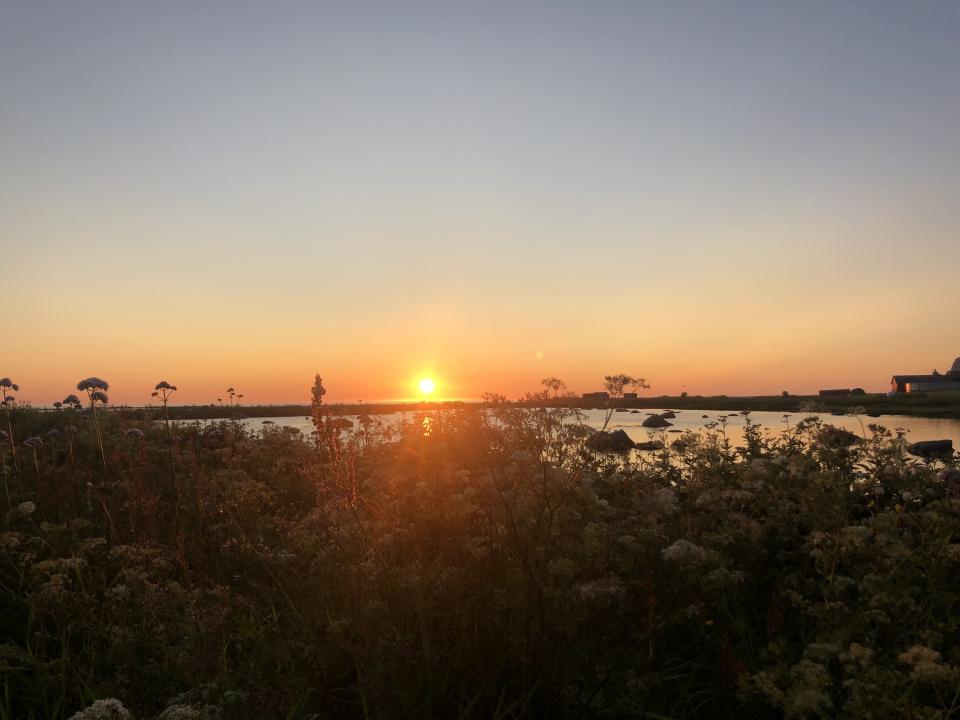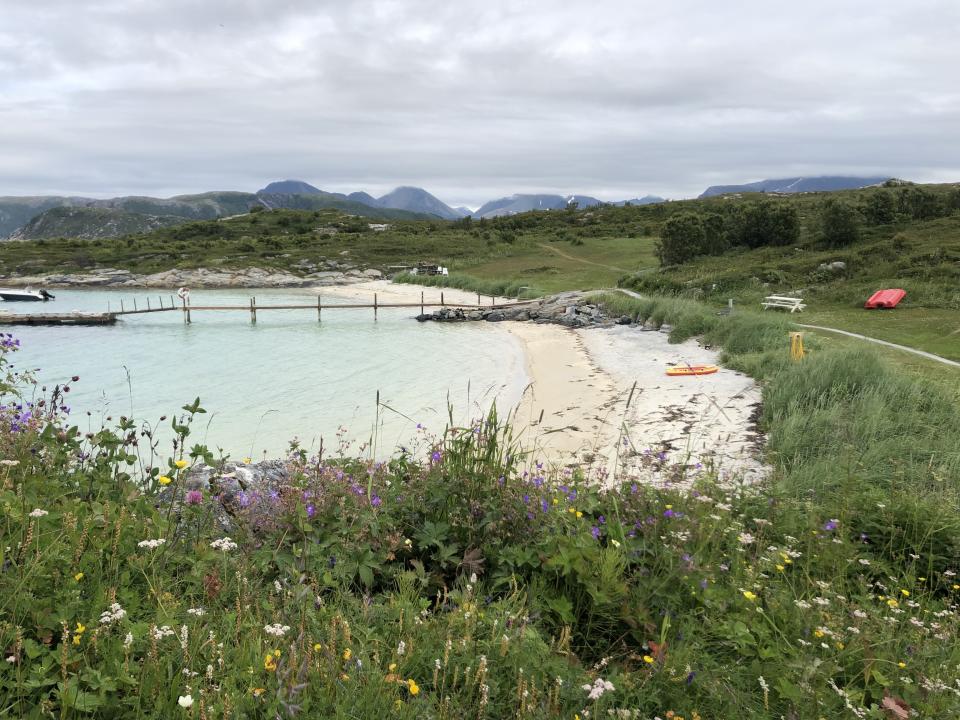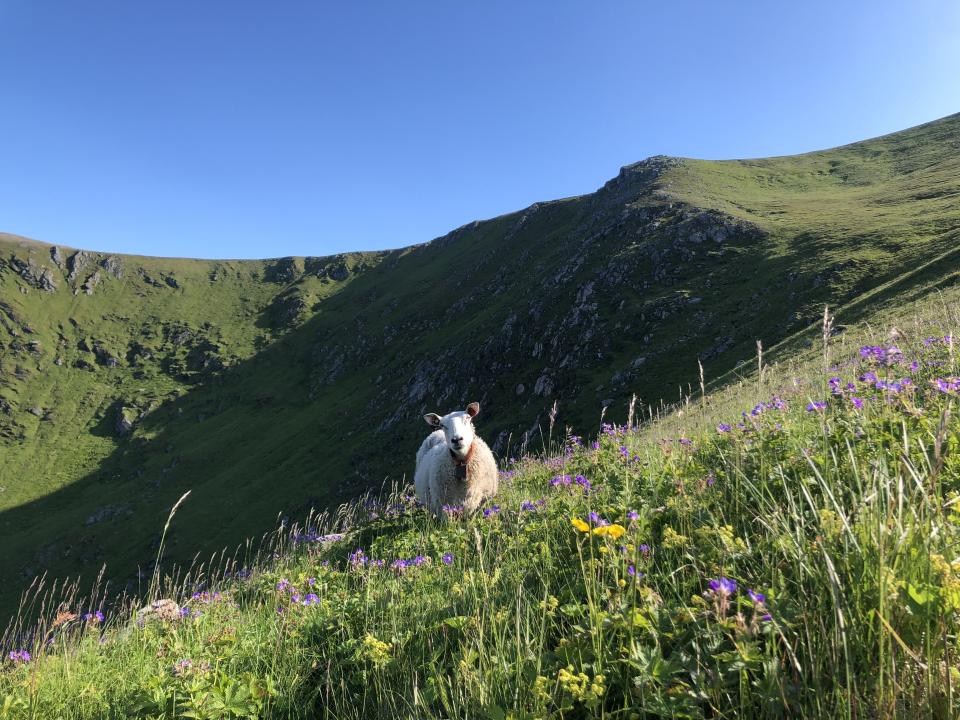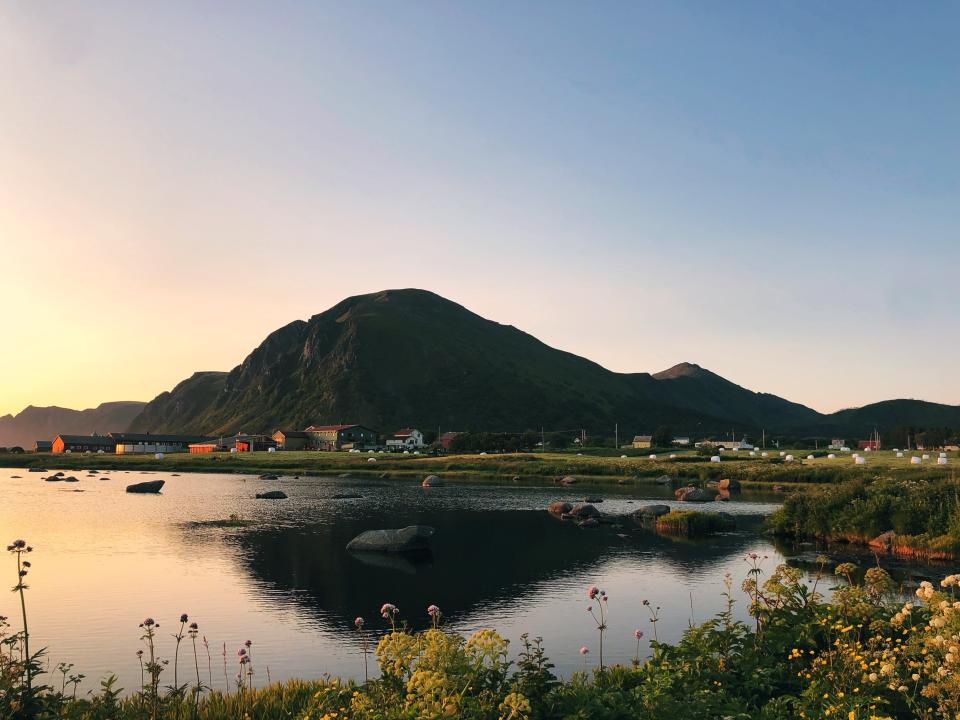Why Your Next Summer Getaway Should Be Above the Arctic Circle
It’s a perfect 70-degree day at the beach: turquoise water glimmers under a warm, unfettered sun. Verdant green peaks are flanked by ribbons of white sand. This kind of island paradise could easily be Hawaii, or the Caribbean; but instead, it is off the northwest coast of Norway, above the Arctic Circle.
Located on the island of Andøya, part of the Vesterålen archipelago, this idyllic place is further north than Reykjavik, Iceland; further north than St. Petersburg, Russia; further north than Anchorage, Alaska. In theory, this place should be covered in an ice sheet. But thanks to the Gulf Stream, the area’s climate is far milder than its northern neighbors. In fact, this region of Norway is the warmest place on earth at this latitude.
Vesterålen seems to be excepted from reality—a lush mirage in a landscape that should be cold and barren. The beautiful summer days are also exempt from another reality: night. The sun doesn’t set for two months—from May 23 to July 21—making summer one long day. (Which means: pack an eye mask.)

Aside from necessitating artificial darkness to sleep, the midnight sun has a broader effect on visitors’ sense of time. Cycles of light and darkness give structure to our days and relevance to timekeeping; but when it never gets dark, the clock and meaning of its hours is upended. To this end, the region garnered media attention in June 2019 when Sommarøy, a nearby island, moved to abolish conventional time-keeping altogether during the summer months. Although this was later revealed to be a publicity stunt coordinated by one of Norway’s tourism agencies, the sentiment behind it is authentic to the local way of life, in which business opening and closing times are all relative.

Another surprise? Summer—in its round-the-clock sunlit glory—is low season in this part of Norway. The region is a popular winter destination for tourists seeking aurora borealis, but summer is mainly for locals, climbers, car campers, and other adventurers. This makes some sense, given the notable lack of easy beach access, one of the hallmarks of summer tourism.
In Vesterålen, you have to work for the best beaches—many are reachable only via hiking trail, some of which are quite demanding. As a result, you’ll often have these oases to yourself. On the island of Andøya, the most spectacular beach is nestled in between two coastal peaks, accessible by a cliffside scramble or a steep hike down the side of a mountain. But the exertion is worth it when you glimpse Otervika’s crystal-clear water lapping calmly against the shore.
The hike to Otervika is an offshoot of the island’s most popular day hike, Måtinden, a 1,350-foot peak that offers sweeping southward views of Høyvika beach and the flatlands beyond it. The ascent is an experience to be savored: the wildflower-studded mountainside is flocked with grazing sheep, whose tinkling bells lure you up. Including ample stops for photos and a picnic lunch—complete with gravlax and a schmear of Norway’s goaty answer to cream cheese, Snøfrisk—you can hike the the 8.5-mile loop in about six hours.

A spot on a deserted, picture-perfect arctic beach is hard to leave—making camping under the midnight sun a genuinely appealing option for those who prioritize natural beauty over creature comforts. Wild camping is permitted throughout Norway, so if you’re up for carrying supplies to the beach, pitching a tent is fair game. Glamping is also an option.
The weather can be unpredictable, so a cabin with a water view is a safer bet. In Bø Andøya, south Måtinden, boutique property Marmelkroken sits just off one of Norway’s 18 national scenic routes, surrounded by farmhouses and facing a rare flat expanse of marshlands and beach. The furnishings are spartan but functional, and the hotel’s restaurant offers breakfast with a view of the water. Homes are also available via Airbnb, but inventory is limited, so book far in advance.

Much of Vesterålen’s allure is its isolation, so accordingly, it’s no easy feat to get there: you’ll lay over in Oslo, catch a flight into one of the region’s small airports, rent a car, and need a tolerance for incredibly narrow roads. (Pro tip: slow down and pull aside onto the non-existent shoulder for oncoming traffic.) But taking it slow is part of the experience—and there is plenty to see along the way.
One option is to fly into Tromsø, the region’s largest city. From there, you can access Vesterålen via the islands of Kvaløya and Senja, which are connected via ferry. Ferries in this part of Norway usually run twice per day—once in the morning and once at night. Space is very limited onboard, so arrive at least one hour early to secure your place in the queue.
This route affords you the option to do several spectacular hikes, or to detour to Sommarøy, a low-lying island that has some of the region’s more accessible beaches (read: you don’t have to climb over a mountain to reach them). If you like bagging peaks, Senja’s most popular hike is Segla, a small but steep mountain with a nearly 1,000-foot vertical rock face. But the most stunning view is had from the summit of nearby Hesten, which faces Segla’s dramatic cliff. For lodging along this route, skip the pricey resort in Sommarøy in favor of a night at the Yggdrasiltunet Farm Hotel, where you can soak in a jacuzzi with a view of the farm’s flocks of sheep and goats.
Alternatively, you can fly in to the city of Svolvaer, to the south. If you choose this route, spend a night in Henningsvaer, a fishing village with a vibrant arts scene, before heading north. The KaviarFactory is home to international contemporary art, and the cod liver oil factory turned cultural space Trevarefabrikken, which hosts DJs and small weekend festivals in the summertime.
Located on the south coast of the adjacent archipelago, Henningsvaer is the gateway Lofoten, which narrows and stretches west into the Atlantic Ocean.
The entire region can be explored in a week, so make your car rental one way, stop looking at the time, and see it all.
Originally Appeared on Vogue

